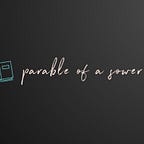Flip the Feedback —Classroom Libraries
A showcase of my classroom’s library system.
I love classroom libraries. Let’s be clear putting a library together is a labor of love (period). One school year, in a new classroom, it took me and a friend almost a week (with breaks) to unbox and level books using a book leveling app… I so wished I had an intern to help.
When I worked in Harlem as an instructional coach and co-principal, I had the privilege of visiting other schools and classrooms somewhat regularly. Whenever I’d visit a classroom, I’d take photos of their library to see how things were arranged and to steal ideas. You see, my school in NYC didn’t have a librarian or an active library for that matter. We had a space, but how the books were organized was unclear. Nevertheless, we always had an abundance of amazing children’s literature.
When organizing my library, I use symbols/stickers to catalog types of books and provide students with a place to put books that are missing such stickers; so that they’re not pressured to guess where to return a book. If I or the students feel a need for a new genre bin, there’s space on the chart to add to our growing library system.
Even though I don’t use our leveled library much for needs-based small groups or guided reading, I do allow the students to have access to leveled books, in addition to our interest library. In my professional opinion, I’ve come to realize that many of the books in F&P’s leveling system A-E are too challenging for early readers, and require them to guess at words well above their decoding ability. I no longer encourage guessing in the absence of guidance and contextual understanding. Over the past two years, I’ve prioritized the use of decodable passages and texts for my most struggling readers to use rather than leveled books.
More about decodables — I also use decodables that align with our phonics curriculum for the entire class. I’ve found a lot of materials from the DC Reading Clinic, Spark Books, Heggerty decodables, and Teachers Pay Teachers (just to name a few). I’ll create a future post about decodable texts.
Here are some pictures of my classroom’s library (accessible to Kindergarten through 2 readers).
Things to notice…
- I keep all of our interest books, decodables, and leveled books (not shown) in color coordinated bins red — interest, yellow-decodables, green-leveled.
- I also like using the stickers to label the books as they provide access to students who aren’t yet decoding fluently or accurately.
- There are labels for the bin on the actual bin and on the shelves, so students know where to put materials back, if they remove the bin.
Behind the Scenes: Book Bins and Book Shopping
- I allow my students to have book bins. Inside they keep no more than a combination of 7–8 leveled, decodable, or interest books.
- They also have speed reading booklets with nonsense words, trick words/heart words, letter sounds, and phrases to practice if they need a brain break.
- Some/most students also have ziplock bags with flashcards from our Fundations unit. I carve out time during station time so that students can cut their new flashcards and add them to their ziplock baggies.
- Book shopping. Every 2–3 weeks, I carve out time to support students with book shopping. The students have shopping lists (that are updated every month or two months depending on their reading progress) that state how many leveled and interest books they may take. Some students will have permission to chapter books, and will subsequently take out fewer of our A-J leveled books. While other students are welcomed to take decodables, leveled books, or those we’ve read in small groups and fewer interest books; becuase of limited access/ability to read more difficult books.
When students finish their assigned station work early (within our 45 minute block), they’re allowed to take more seatwork or to read. I encourage students to write about what they’ve read after independent reading, especially if they’ve had a chance to finish their book. In an earlier Flip the Feedback post, I shared an exit ticket tool that I use routinely — I utilize a “write about reading” template from the packet mentioned in this previous post “FTF Stop and Jot”.
Note: I don’t have enough time for a longer block of pleasure reading, I don’t typically allow students to book shop weekly, because they haven’t had enough time to finish their books. If you have more time for pleasure reading/independent reading and conferring, then you might allow for students to book shop more often.
Fun fact: I never met my maternal grandfather (he passed when I was 2) and pictures of him are scarce. However, just last week my Aunt Teasie sent me a picture of him. Come to find out, my grandfather was a librarian in Lizella, Georgia in his early adulthood. Perhaps my love for libraries and books is genetic.
Thank you for checking out my newest Flip the Feedback post, if you’ve missed or didn’t know about the previous posts in this series here are the links to the other topics:
Flip the Feedback — Improving Stations/Center Time
Flip the Feedback — Three, 3 Minute ELA, YouTube Essentials
Flip the Feedback — Teaching and Activism
Flip the Feedback — Stop and Jots
Flip the Feedback -Fundations Phonics Enhancements
Three Essentials for Every Teacher
A request…
If this is your first time stumbling upon Medium, consider becoming a member of the Medium community and support (pay) writers with your membership.
Additionally, if you found what I wrote helpful/useful then please clap. You can clap up to 50 times, so clap it up! If you want to hear more from me, please consider following me.
